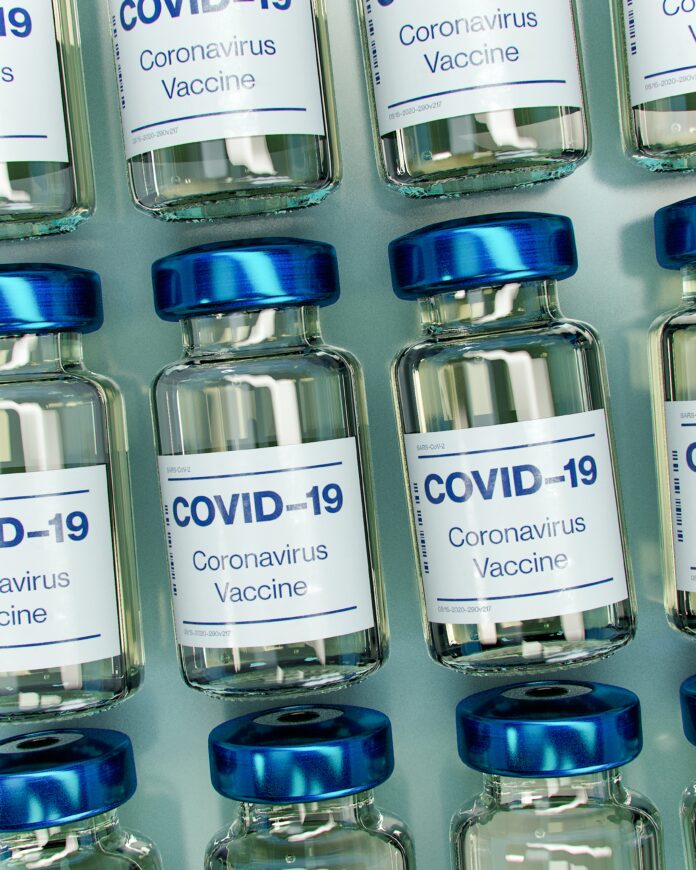June 28, 2021: A sub-analysis from the Oxford-led COV001 and COV002 trials with Vaxzevria induced strong immune responses following either a prolonged second dose interval of up to 45 weeks or following a third boosting dose.
The results, published by the University of Oxford on the pre-print server of The Lancet, demonstrated that antibody levels remain elevated from baseline for at least one year following a single dose.
An extended interval between the first and second dose of Vaxzevria of up to 45 weeks, resulted in up to an 18 fold increase in antibody response, measured 28 days after the second dose.
With a 45 week dosing interval between the first and second dose, antibody titres were four times higher than with a 12 week interval, demonstrating that a longer dosing interval is not detrimental but can derive stronger immunity.
In addition, a third dose of Vaxzevria given at least 6 months after a second dose, boosted antibody levels six fold and maintained T cell response. A third dose also resulted in higher neutralising activity against the Alpha (B.1.1.7, ‘Kent’), Beta (B.1.351, ‘South African’) and Delta (B.1.617.2, ‘Indian’) variants.
Both the late second dose and the third dose of Vaxzevria were less reactogenic than the first dose.
Professor Sir Andrew J Pollard, chief investigator and director of the Oxford Vaccine Group at the University of Oxford, said: “This should come as reassuring news to countries with lower supplies of the vaccine, who may be concerned about delays in providing second doses to their populations. There is an excellent response to a second dose, even after a 10 month delay from the first.”
Sir Mene Pangalos, Executive Vice President, BioPharmaceuticals R&D, said: “Demonstrating our vaccine generates a robust and durable immune response is important for providing confidence in longer term protection.
We look forward to continuing to partner with the University of Oxford and recommending bodies around the world to further evaluate the impact of these data.”
The analysis included volunteers aged 18 to 55 years who were enrolled in COV001 and COV002 trials and had received either a single dose or two doses of COVID-19 Vaccine AstraZeneca.
Vaxzevria, formerly AZD1222
Vaxzevria was co-invented by the University of Oxford and its spin-out company, Vaccitech.
It uses a replication-deficient chimpanzee viral vector based on a weakened version of a common cold virus (adenovirus) that causes infections in chimpanzees and contains the genetic material of the SARS-CoV-2 virus spike protein.
After vaccination, the surface spike protein is produced, priming the immune system to attack the SARS-CoV-2 virus if it later infects the body.
The vaccine has been granted a conditional marketing authorisation or emergency use in more than 80 countries across six continents, as a two dose regimen given four to 12 weeks apart for adults aged 18 years and over.
More than 600 million doses of COVID-19 Vaccine AstraZeneca have been supplied to 170 countries worldwide, including more than 100 countries through the COVAX Facility.
In the UK, Vaxzevria is known as COVID-19 Vaccine AstraZeneca.
COV001
COV001 is a single-blinded, randomised, controlled Phase I/II trial to determine safety, immunogenicity and efficacy of the COVID-19 vaccine candidate, AZD1222 in up to 1,077 healthy adults in five trial centres in the United Kingdom.
Participants aged 18-55 years received either a single dose or two-doses of AZD1222 at 5×1010 viral particles or a single dose of a meningococcal conjugate vaccine MenACWY as control vaccine.
Participants had blood samples drawn and clinical assessments for safety as well as immunogenicity at day 0, 28 and will also be followed at day 184 and 364.
In addition, participants enrolled in the Phase I component of the study and in the two dose groups, had visits at 3, 7, 14 and 28 days after each vaccination.
COV002
COV002 is a single-blinded, multi-centre, randomised, controlled Phase II/III trial assessing the safety, efficacy and immunogenicity of AZD1222 in 12,390 participants in the UK.
Trial participants were aged 18 years or over, who were healthy or have medically stable chronic diseases and are at increased risk for being exposed to the SARS-CoV-2 virus. Participants received one or two intramuscular doses of a half dose (~2.5 x1010 viral particles) or full dose (~5×1010 viral particles) of AZD1222 or comparator, meningococcal vaccine MenACWY.
Participants had blood samples drawn and clinical assessments for safety as well as immunogenicity at multiple timepoints up to one year post-vaccination.
Suspected cases presenting with compatible symptoms were tested for virological confirmation by COVID-19 PCR.
In addition, weekly swabbing are done for detection of infection and assessment of vaccine efficacy against infection.


